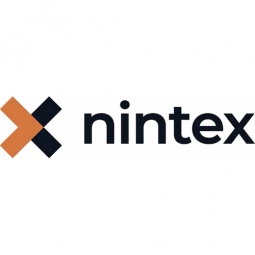技术
- 分析与建模 - 机器人过程自动化 (RPA)
- 基础设施即服务 (IaaS) - 备份与恢复
适用行业
- 金融与保险
适用功能
- 人力资源
- 维护
用例
- 租赁金融自动化
- 物料搬运自动化
关于客户
本案例研究中的客户是一家位于马萨诸塞州的社区银行,拥有 5 亿美元的资产。该银行受到 2013 年 Target Corporation 信用卡泄露事件的严重影响,大约 10% 的持卡人群体(900 张卡)可能受到损害。该银行面临着手动更改持卡人限额、记录账户、然后取消和重新发行卡的艰巨任务。然而,作为 Nintex Foxtrot RPA 的客户,该银行能够利用该数据自动化软件来自动化整个恢复过程,节省大量时间和金钱,并确保 100% 的准确性。
挑战
2013 年,Target Corporation 经历了历史上最大规模的信用卡泄露事件之一,黑客窃取了近 7000 万张信用卡和借记卡号码。此次违规行为对中小型发卡机构造成了重大影响,他们面临着手动更改持卡人限额、记录账户、然后取消和重新发卡的艰巨任务。一家拥有 5 亿美元资产的马萨诸塞州社区银行发现,大约 10% 的持卡人群体(900 张卡)可能受到此次泄露的影响。此类违规事件的传统恢复流程包括手动向受影响的客户发送信件和电子邮件、手动降低交易限额、手动更新账户信息,然后手动取消和重新发行卡。这个过程非常耗时、劳动密集型,并且容易出现人为错误。
解决方案
该银行已经是 Nintex Foxtrot RPA 的客户,利用该数据自动化软件快速准确地自动执行取消和重新发行受损卡的过程,以最大程度地减少客户停机时间。 Nintex Foxtrot RPA 就像自动化员工一样,自动且完全准确地执行任何非结构化手动任务,例如数据输入或维护。该银行使用其数据仓库识别出任何活跃且可能受到 Target 违规影响的账户。然后,Nintex Foxtrot RPA 提取这些客户的姓名、地址和其他信息,并填写套用信函和电子邮件,通知客户遭到泄露。然后,它会自动执行文件维护、更改用户代码并向每个受影响的帐户添加注释。随后,该银行开始调整借记限额,并为据信已被盗用的大约 900 张卡中的每张卡更新用户代码。所有这一切都在几个小时内完成。
运营影响
数量效益

Case Study missing?
Start adding your own!
Register with your work email and create a new case study profile for your business.
相关案例.

Case Study
Real-time In-vehicle Monitoring
The telematic solution provides this vital premium-adjusting information. The solution also helps detect and deter vehicle or trailer theft – as soon as a theft occurs, monitoring personnel can alert the appropriate authorities, providing an exact location.“With more and more insurance companies and major fleet operators interested in monitoring driver behaviour on the grounds of road safety, efficient logistics and costs, the market for this type of device and associated e-business services is growing rapidly within Italy and the rest of Europe,” says Franco.“The insurance companies are especially interested in the pay-per-use and pay-as-you-drive applications while other organisations employ the technology for road user charging.”“One million vehicles in Italy currently carry such devices and forecasts indicate that the European market will increase tenfold by 2014.However, for our technology to work effectively, we needed a highly reliable wireless data network to carry the information between the vehicles and monitoring stations.”

Case Study
Safety First with Folksam
The competitiveness of the car insurance market is driving UBI growth as a means for insurance companies to differentiate their customer propositions as well as improving operational efficiency. An insurance model - usage-based insurance ("UBI") - offers possibilities for insurers to do more efficient market segmentation and accurate risk assessment and pricing. Insurers require an IoT solution for the purpose of data collection and performance analysis

Case Study
Smooth Transition to Energy Savings
The building was equipped with four end-of-life Trane water cooled chillers, located in the basement. Johnson Controls installed four York water cooled centrifugal chillers with unit mounted variable speed drives and a total installed cooling capacity of 6,8 MW. Each chiller has a capacity of 1,6 MW (variable to 1.9MW depending upon condenser water temperatures). Johnson Controls needed to design the equipment in such way that it would fit the dimensional constraints of the existing plant area and plant access route but also the specific performance requirements of the client. Morgan Stanley required the chiller plant to match the building load profile, turn down to match the low load requirement when needed and provide an improvement in the Energy Efficiency Ratio across the entire operating range. Other requirements were a reduction in the chiller noise level to improve the working environment in the plant room and a wide operating envelope coupled with intelligent controls to allow possible variation in both flow rate and temperature. The latter was needed to leverage increased capacity from a reduced number of machines during the different installation phases and allow future enhancement to a variable primary flow system.

Case Study
Automated Pallet Labeling Solution for SPR Packaging
SPR Packaging, an American supplier of packaging solutions, was in search of an automated pallet labeling solution that could meet their immediate and future needs. They aimed to equip their lines with automatic printer applicators, but also required a solution that could interface with their accounting software. The challenge was to find a system that could read a 2D code on pallets at the stretch wrapper, track the pallet, and flag any pallets with unread barcodes for inspection. The pallets could be single or double stacked, and the system needed to be able to differentiate between the two. SPR Packaging sought a system integrator with extensive experience in advanced printing and tracking solutions to provide a complete traceability system.

Case Study
Transforming insurance pricing while improving driver safety
The Internet of Things (IoT) is revolutionizing the car insurance industry on a scale not seen since the introduction of the car itself. For decades, premiums have been calculated using proxy-based risk assessment models and historical data. Today, a growing number of innovative companies such as Quebec-based Industrielle Alliance are moving to usage-based insurance (UBI) models, driven by the advancement of telematics technologies and smart tracking devices.
Case Study
Enhancing Security and Compliance in Remitly's Global Money Transfer Service with Fastly
Remitly, an online remittance service, was faced with the challenge of securing its proprietary global transfer network. The company needed a security solution that could meet PCI requirements and protect customers' sensitive transactions through its mobile application. The solution had to be capable of defending against new and emerging attack types without impacting performance. Remitly also had to deal with irregular traffic patterns, such as a sudden spike in account transfers from a small network segment on the Pacific coastline of South America. The company needed to determine in real time whether such traffic indicated an attack or valid requests. A traditional web application firewall (WAF) would not be able to distinguish this traffic, potentially leading to customer frustration if the IP was blacklisted.







